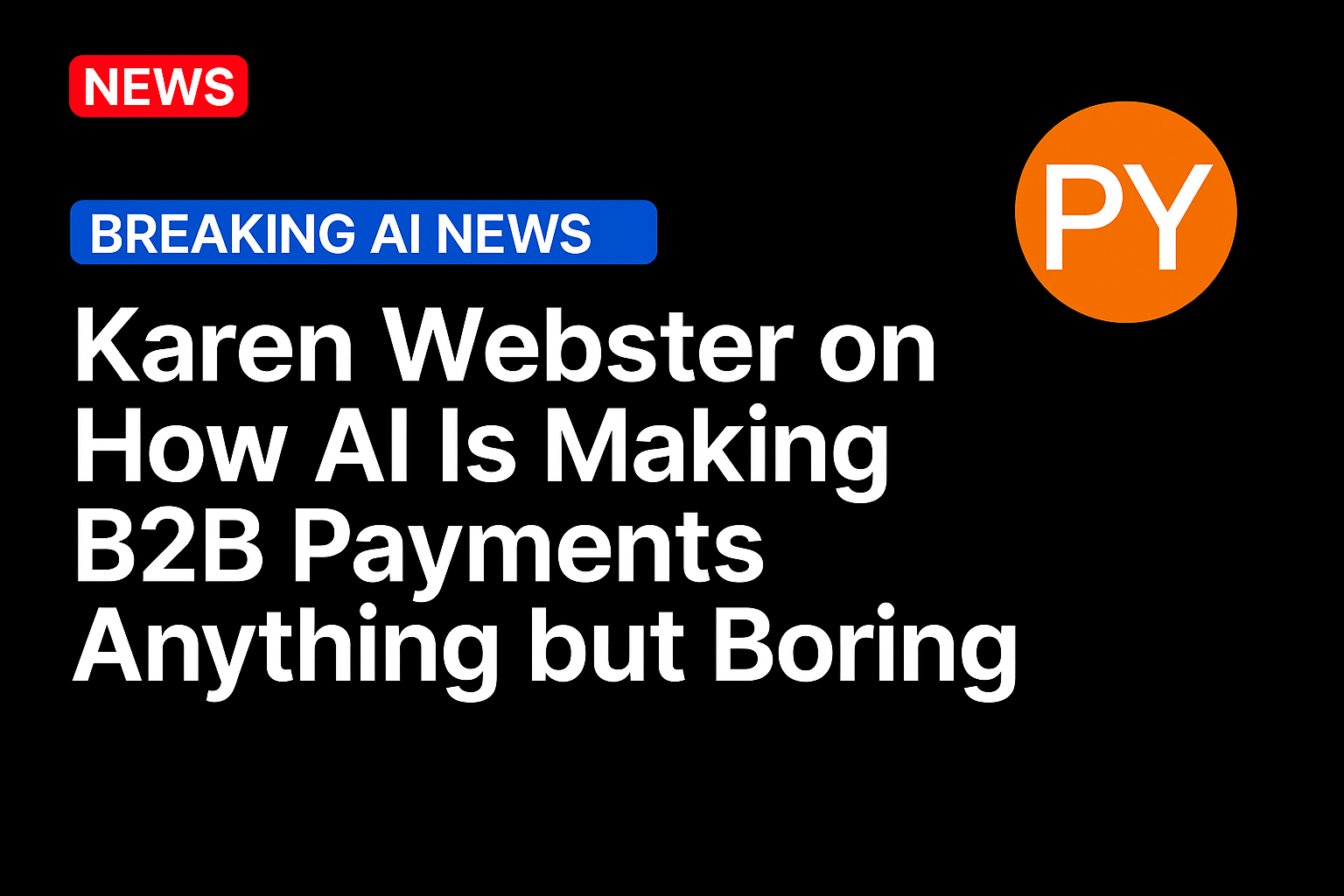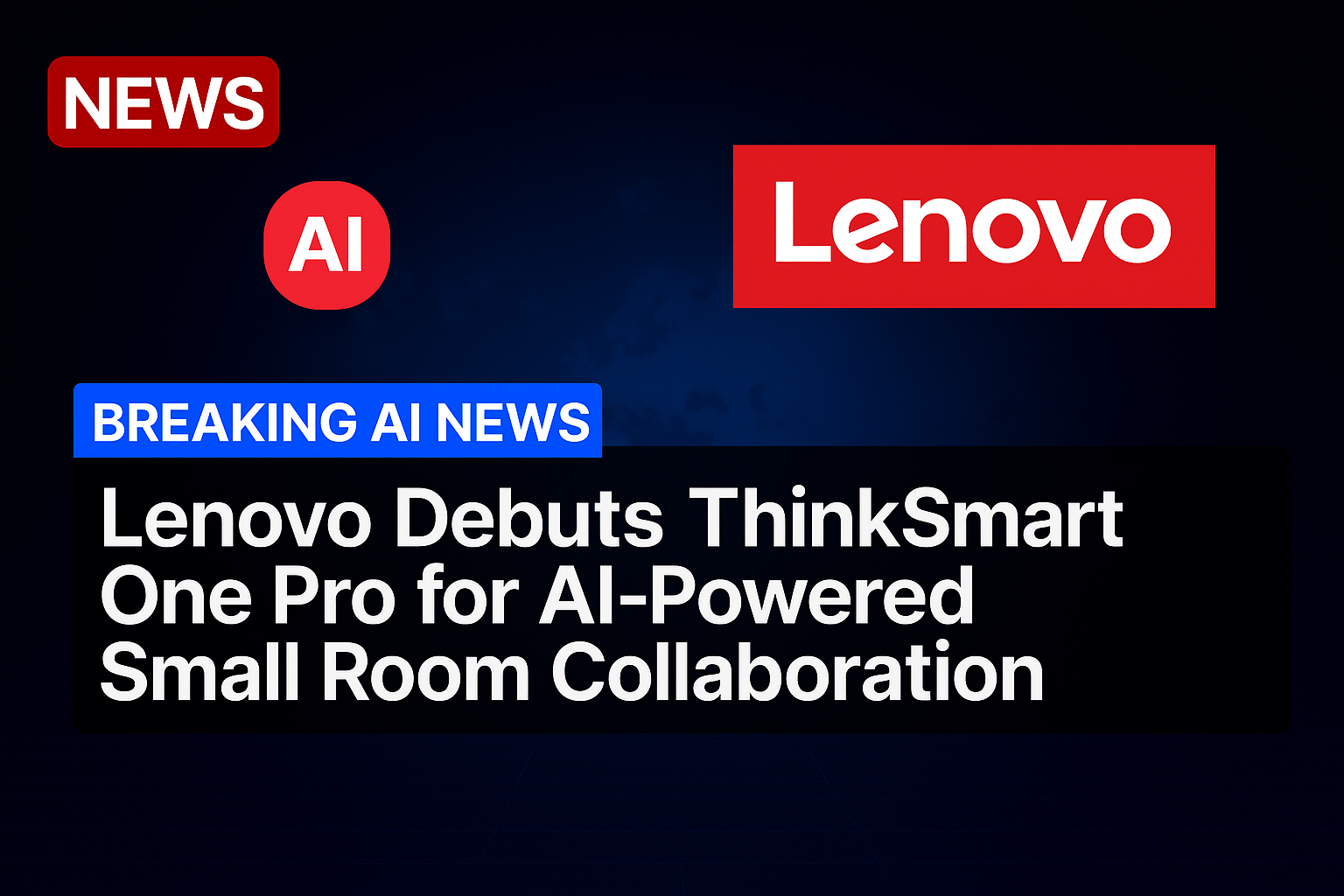B2B’s AI moment isn’t about shiny demos. It’s about turning the back office into a decision engine. And PYMNTS is set to track that journey with its month-long virtual event B2B.AI: The Architecture of Intelligent Money Movement. It’s a virtual program built for operators: CFOs, treasurers, product leads and platform builders who want the playbooks behind AI that have proven value in B2B.
“The opportunity now with Gen AI is to take those specialized point solutions and models to general intelligence across the business,” says PYMNTS CEO Karen Webster. “There’s a contextual aspect and a reasoning aspect that Gen AI and agents bring to the office of the CFO. The real potential is to move from automation to autonomy. We’re moving to a point when agents are making decisions based on what has historically happened and what they predict will deliver a better outcome.”
The event’s first panel kicked off Monday, Oct. 6 at Noon ET as PYMNTS’ sixth-annual October series returns. The kickoff session, “The Right Time for Real-Time Account Funding Is Now,” goes straight at a pain point every provider and platform is tackling: funding at machine speed without introducing machine-sized risk. Expect practical guidance on where real-time rails fit, how to design for compliance from day one and why the user journey is now the risk journey.
A marquee keynote brings the enterprise lens: Mastercard Chief Commercial Payments Officer Raj Seshadri joins the series to unpack how AI and data are reshaping commercial flows. Seshadri details the advantage that insight-rich finance teams will have as autonomy scales across AP/AR, reconciliation and working capital.
Mid-month, the series pivots to identity, which in the agentic commerce world is now table stakes for growth, not a bolton control. In “From Bolton to BuiltIn: Identity’s Payments Moment” on Thursday, Oct. 23 at 1:00 p.m. ET, Webster convenes senior leaders to debate the next guardrails: What replaces fragile SMS codes? Which signals matter most as fraud accelerates? How do you step up authentication without slowing down the flow?
Other events during the month show how AI’s center of gravity has shifted from automating tasks to delegating judgment. Agentic systems are starting to observe, predict and act across payments workflows from fraud interdiction and compliance checks to when, where and how funds move. That transition depends on trusted data and model governance, but the through line is clear: decisions move closer to the moment of money movement.
What you’ll see across B2B.AI:
- Agentic AI in production. Real examples of intelligent agents compressing manual reviews, collapsing hand offs and elevating exceptions. We will detail the difference between “automated” and “autonomous.”
- Identity as a growth lever. Continuous, signal-rich identity stitched into real-time payments and embedded finance with debate on replacing legacy infrastructure and calibrating the step up to agentic.
- Onboarding without drag. How AI slashes time-to-value by parsing documents, resolving entities and scoring risk in real time, turning weeks of integration and compliance into hours.
- The rails + intelligence handshake. What changes when instant funding and AI-driven risk sit in the same loop and how providers design for speed and control from day one.
Webster’s view of the road ahead is pragmatic and bullish. AI has lived in B2B for years inside narrow tools (think risk scoring and anomaly detection), she believes. The difference now is context: digital copilots that populate dashboards with cross-enterprise signals, and agentic systems that propose (and increasingly execute) next best actions. That shift, she argues, reclaims time for innovation while sharpening the CFO’s visibility into cash, counter-party risk and opportunities to deploy working capital in real time.
“This morning I was listening to someone talking about there being too much hype around AI. is is there too much hype around AI? Is it a bubble? And clearly it’s not,” she said. “It is a transformative technology, and I think we need to really look at its potential to change not just B2B payments and how trading partners engage, but every aspect of every business. It will accelerate the innovation trajectory of every business because the technology is so accessible and it gets better literally every day because these models are learning from our engagement with it every day.”
B2B.AI runs Oct. 6–31, with new sessions dropping throughout the month. It’s designed to separate signal from noise. It’s designed to move beyond generic AI platitudes and into the workflows where competitive advantage is actually being won.
As Webster puts it, “I hope that AI becomes an embedded part of the business … and I look forward to not so much talking about the technology, but the outcomes of the technology next year and in the years to come.”
Details and registration are available on the event’s landing page. If you’re building, buying or funding the next generation of B2B money movement, block your calendar. The autonomy era isn’t coming to payments. It’s already here.
Source: https://www.pymnts.com/




